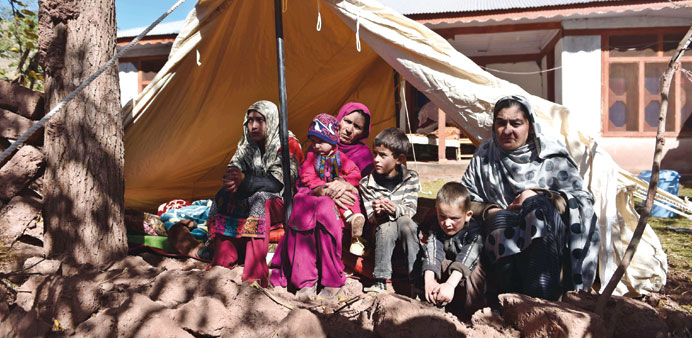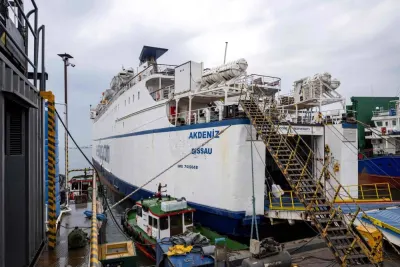A Pakistani earthquake survivor family sits in a tent outside their damaged house in Charun Avir village, some 65 kilometres north of Chitral yesterday.
Rescuers said yesterday they believed they have reached most of those affected by the powerful earthquake that ripped across Pakistan this week, but thousands of desperate survivors now face a race to rebuild with winter fast approaching.
Rugged terrain, severed communication lines and an unstable security situation have impeded relief efforts since Monday’s 7.5 magnitude quake killed more than 390 people in Pakistan and Afghanistan and levelled thousands of homes.
But yesterday Pakistan’s National Disaster Management Authority (NDMA) said it believes it has reached “most of the affected area”.
A spokesman said helicopters are still searching for any survivors in the most remote, inaccessible areas of the mountainous region.
Pakistan’s confirmed death toll so far stands at 272, with more than 1,900 people injured and nearly 14,000 homes damaged, though the spokesman said the NDMA was still in the process of estimating a final toll.
Desperate victims, meanwhile, appealed for aid, expressing fears for children in particular who were forced to sleep outside in sub-zero temperatures as winter sets in.
“After November 15 there will be three to four feet of snow here and we have nothing to protect us,” said Mir Wali, whose village Charun Ovir rests 10,000 feet up the mountainside in the northwestern district of Chitral.
Dust is still rising from the mountain after the earthquake caused cracks in it, leaving villagers fearing a landslide or collapse.
“Whatever the government has to do, it should do before the snowfall,” he said.
“After that the roads will be blocked and we won’t be able to save our children.”
In Afghanistan, authorities have put the toll at 121 people with some 8,000 houses damaged — but there are fears the number of dead could still spike, with charities warning that the Taliban presence was hindering access to many of the affected areas.
UNAMA official Mark Bowden said it appeared NGOs had the capacity to help after the quake, but that access to the areas “varies from one (insurgent) commander after another”.
Desperate survivors were left marooned on mountaintops in Badakhshan, the remote province where the epicentre of the earthquake was located and where much of the territory is controlled by the insurgents.
In Sawkay district in the badly-hit Afghan province of Kunar, residents said on Wednesday that no officials had yet appeared.
“The government has not asked what happened to us,” said resident Mohammad Akram. “No government official visited us.”
The quake was centred near Jurm in northeast Afghanistan, 250km from the capital Kabul and at a depth of 213.5km, the US Geological Survey said.
Aid agencies have stressed the need for greater disaster preparedness in war-torn Afghanistan — but it has been a low priority for the nation as it struggles to end a 14-year war against the Taliban insurgents.
Local officials in Chitral, in Pakistan’s worst-hit province of Khyber Pakhtunkhwa, said they had few supplies to hand after the region was devastated by floods just three months ago.
“We usually have our own stock but we already consumed it during the floods,” said Mohamed Bahadur, an official in the village of Darosh.
Bahadur’s village had just 70 tents on hand when the quake struck, he said.
“Around 2,500 houses have been completely destroyed... Imagine how we can satisfy the need with only 70 tents?”
Mir Wali in Charun Ovir said the village had no electricity, no clean drinking water, and no medical facility.
Officials had handed out 49 tents to share between 150 to 200 households, he said.
Other survivors are already planning to leave if they do not receive help soon.
Shahroon, a Chitral villager who goes by one name, said if the government can help them rebuild before the snow comes they will stay.
If not, he said, “we will go to Rawalpindi or Peshawar or any other city and spend our lives begging on the roads”.



